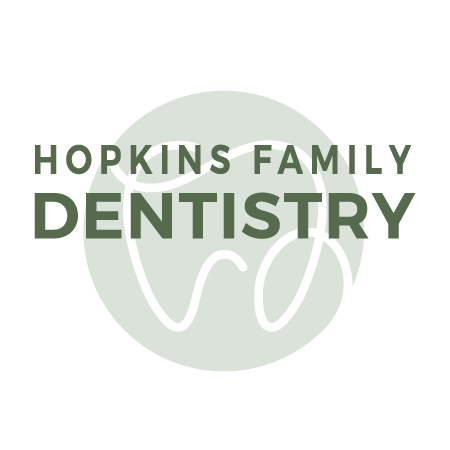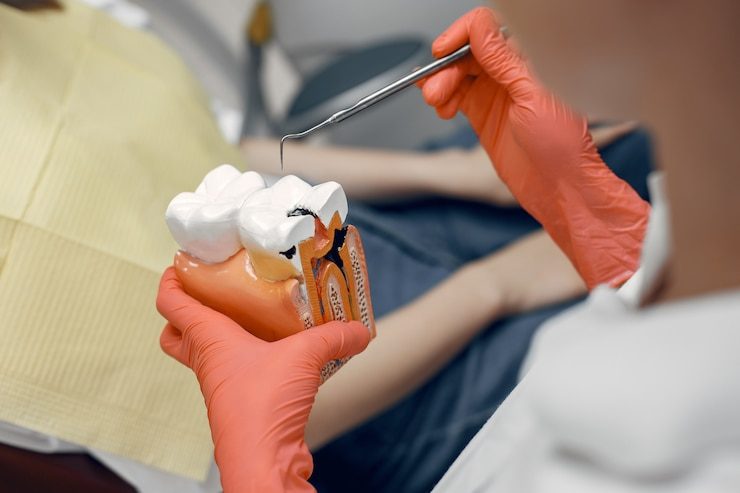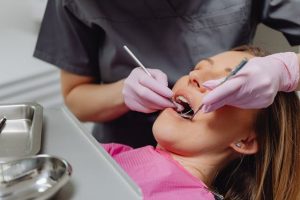Teeth can wear down, chip, break, decay, or even fall out. But missing or damaged teeth don’t just change how your smile looks. This issue can affect eating, speaking, and how your jaw aligns. Over time, this can lead to pain or even more dental problems.
Most people don’t think much about their teeth unless something starts to hurt. But catching small issues early can make a big difference later. That’s where restorative dental care comes in — it’s all about repairing damage and keeping your mouth functioning properly.
Specialized restorative dentistry has been develop to remedy a wide range of dental problems. Some people need a simple filling. Others need full tooth replacement. Whatever the case, the goal is always the same: restore and protect your teeth so your mouth stays healthy, comfortable, and strong. This kind of care helps prevent pain and avoids the need for more serious treatments down the road.
Some treatments are simple. Some are more complex. Let’s look at what restorative dental care means, what procedures are involve, and how they help.
Basic Restorative Dentistry?
Basic restorative dental work covers small, common procedures used to repair early damage. These treatments address issues like tooth decay, minor cracks, and everyday wear. Fillings are the most common solution, but crowns and root canals also fall into this category.
The main goal is to save the natural tooth whenever possible. If a filling or crown can restore it, there’s no need for extraction, and keeping your natural teeth is almost always the better option. When left untreated, small problems like cavities or cracks can worsen, leading to infection or even tooth loss. Basic restorative care helps prevent that from happening and protects your long-term oral health.

Common Restorative Dental Procedures
Restorative dental procedures repair damage and restore teeth to full function. These treatments range from simple to complex, depending on the extent of the repair needed. Here are the most common ones:
-
Dental Fillings
These are used for cavities. After extracting the tooth’s decayed portion, the dentist uses a sturdy substance to fill the gap. The filling stops the decay from spreading. It also restores the shape and strength of the tooth.
-
Crowns
A dental crown is one of the most common dental restorative procedures. A crown covers a tooth that’s been damaged or weakened. Crowns protect damaged teeth and restore their shape, strength, and function. Dentists often place crowns after large fillings or root canal treatments, and they’re also used to reinforce cracked teeth that are at risk of breaking.
Crowns are made to blend in perfectly by matching the color of your natural teeth. Once placed, they look, feel, and function like real teeth. Whether a tooth is broken, worn down, or weakened by a procedure, a crown helps protect it while preserving your bite and your smile.
-
Bridges
A bridge fills the space left by one or more missing teeth. It uses crowns on nearby teeth to hold the replacement tooth in place. This helps keep your other teeth from shifting and keeps your bite aligned.
-
Dentures
Dentures are used for many missing teeth. They can be full or partial. They improve chewing and help support your facial structure.

-
Dental Implants
Implants replace missing teeth through a process that involves placing a post in the jawbone, which acts like a natural tooth root. A crown is place on top. Implants act like real teeth and help keep the jawbone healthy.
-
Root Canal Therapy
A root canal is a key part of restorative dental care. When a tooth gets infected on the inside, the pulp must be remove. If left untreated, the infection can spread. A root canal clears out that infection.
Afterwards, the inside of the tooth is clean and seal. Most root canals end with a crown to protect what’s left of the tooth. This saves the tooth from extraction and stops the pain and pressure caused by the infection. Root canals protect both the tooth and the teeth around it.
The Benefits of Restorative Dental Procedures
Restorative dental procedures repair damage and restore functionality. Some notable benefits are:
-
Better chewing
When your teeth are treat appropriately, you can chew evenly. You don’t have to avoid one side of your mouth or stick to soft food.
-
Clearer speech
Missing or damaged teeth affect how you speak. Fixing those teeth helps restore clear, natural speech.
-
Protection from future problems
A small crack or cavity left untreated becomes a bigger issue. Fixing damage early stops pain, infection, and bone loss.
-
Better appearance
Most restorations aim to accurately match the color and shape of your teeth. That means you don’t have to worry about how they look. They blend in and feel natural.
-
Long-term stability
Restored teeth support the rest of your bite. They keep other teeth from shifting and help your jaw stay healthy.
When To Consider Restorative Dental Care
You don’t need to wait for major pain. These signs mean it’s time to get check:
- Tooth pain when chewing
- Sensitivity to heat, cold, or sweets
- Visible cracks or chips
- One or more missing teeth
- Trouble biting or chewing
- Old dental work that feels loose or worn
Final Thoughts
Teeth can fracture, wear down, or fall out, but restorative dental care helps get them back in shape and working properly. The right procedure restores chewing strength, comfort and clear speech, keeping your mouth functioning the way it’s meant to.
Common procedures like fillings, crowns, and implants don’t just fix problems; they help you avoid pain and protect your long-term health. If you notice something isn’t right, don’t wait. Visit Hopkins Family Dentistry to explore your options and experience the best of dentistry in hopkins city.
Our team takes a patient-centric approach to assess your needs and build a clear treatment plan, whether it’s a simple fix or something more involved. No matter the case, our goal is the same: to restore your smile and keep your teeth functioning at their best.
Visit the best Hopkins dental clinic today!







